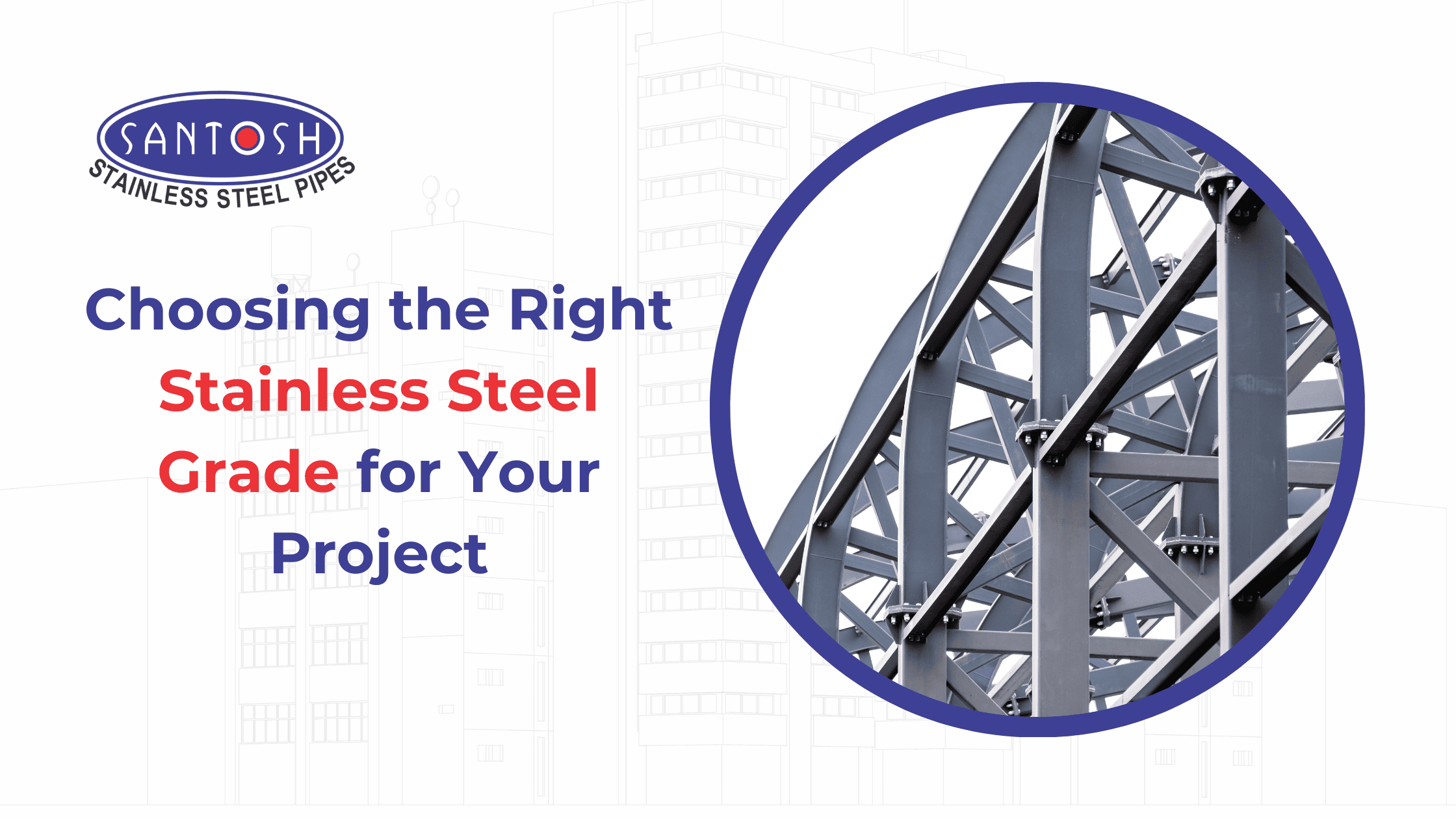
Introduction
Stainless steel grades play a fundamental role in determining the functioning and durability of a project. Whether you're working on a construction project, manufacturing equipment, or an architectural project, selecting the appropriate stainless steel grade is crucial for attaining the best results. In this blog post, we'll walk you through the key considerations to help you choose the correct grade of stainless steel for your project.
Understanding Stainless Steel Grades
An alloy of iron, chromium, nickel, and other elements is called stainless steel. Because of its longevity and resistance to corrosion, it is a preferred option for various applications.
But not every grade of stainless steel is equal. Different grades of stainless steel are made for various purposes.
There are different grades of stainless steel, and each is intended for specific uses. Austenitic is versatile and great for kitchens and construction. Martensitic offers strength for cutlery and industrial gear. Ferritic suits automotive applications because it is a corrosion-resistant grade. Duplex is a blend for chemical industries. Precipitation hardening is crucial in aerospace.
Consider the following factors when choosing the stainless steel grade.
Project Requirements
Identifying project specifications: Make sure you fully understand the criteria of your project before deciding on a stainless steel grade. The intended purpose, load-bearing needs, and environmental conditions are a few things to consider.
Corrosion-resistance grade: Figure out how much the project is exposed to corrosive elements. In detail, if the project will be exposed to chemicals or severe weather, prefer a grade with exceptional corrosion resistance.
Strength and Durability: Analyze the needs for strength and durability in the project. The tensile strength and toughness of different grades vary. Confirm that the grade you have chosen meets the requirements of your project.
Compatibility with Environments
High-temperature applications: For projects involving high temperatures, choose a stainless steel grade that can tolerate heat without losing structural integrity.
Low-temperature environments: In frigid temperatures, specific grades could break easily. Consider the impact of low temperatures on the chosen stainless steel grade.
Exposure to chemicals: If your project involves exposure to chemicals, choose a stainless steel grade resistant to corrosion driven by particular chemicals relevant to your application.
Budget Considerations
Balancing quality and cost: Although premium stainless steel grades perform better, it's important to balance quality with budget constraints. Explore affordable choices without compromising the project's integrity.
Long-term perspective: Consider the stainless steel grade you choose to be an investment for the long run and fit with applications and industries. Selecting a higher grade may result in lower maintenance costs, ultimately saving money in the long run.
Comparative Analysis of Grades
Perform a comprehensive comparative analysis between several stainless steel grades. Consider their advantages, disadvantages, and effectiveness in related applications. Based on actual performance, this comparative analysis helps determine the best grade and ensures an informed decision-making process.
Consultation with Experts
When in doubt, consult with stainless steel specialists or engineers. Their knowledge can offer insightful advice on selecting the best grade for your project. Their guidance ensures that your choices align with industry best practices, reducing the possibility of mistakes and maximizing project success.
Real-Life Examples
Take a closer look at the practical case studies where the choice of stainless steel grade matched specific applications and industries and was essential to the project's success. Learn from other people's past actions to help you make wise decisions. Examining the choices made by others will provide helpful insights.
Common Mistakes to Avoid
Neglecting corrosion resistance: Ignoring the significance of corrosion resistance is a common mistake. Selecting a grade inappropriate for the project's surroundings may result in early deterioration and costly repairs.
Overlooking project specifics: Each project has unique demands that should influence your choice. If your needs and requirements are precise, the project has more chances of succeeding.
Disregarding maintenance requirements: Different grades of stainless steel require different maintenance. Neglecting these requirements may eventually lead to more damage and reduced efficiency.
Availability and Lead Times
Determine whether the selected grade of stainless steel is available and estimate lead times. For projects to stay on schedule, timely access to the required quantity is essential. It is crucial to prevent project delays. Keeping open communication with suppliers is advisable to tackle any unanticipated challenges and proactively manage potential complications that could impact the project timeline.
Ensure the supply chain is reliable by verifying the supplier's track record, customer reviews, and ability to fulfill delivery commitments.
Future Trends in Stainless Steel
Innovations in Stainless Steel Grades: Stay up to date with the latest advances and innovations in stainless steel technology. Emerging grades could have improved qualities, providing exciting possibilities for future projects.
Sustainable Stainless Steel Options: Research stainless steel grades that meet environmentally friendly standards as sustainability becomes essential. Environmentally conscious project development can benefit from the use of sustainable choices.
Wrap-up
To sum up, the project's success depends on the choice of stainless steel grade. Consider the project requirements, environmental factors, mechanical properties, and monetary constraints. Evaluate specific requirements, keep up with industry standards, and ensure the chosen stainless steel aligns seamlessly with project goals for lasting success. The secret is to comprehend various grade levels, avoid common blunders, and seek professional advice.